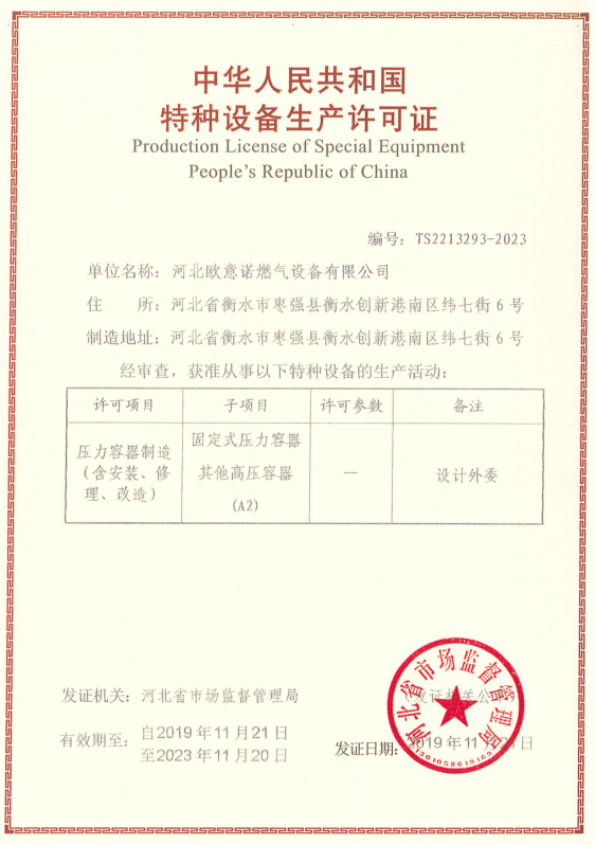
Oct . 21, 2024 16:44
Back to list
Gas Pressure Regulation Solutions for Efficient System Performance and Safety.
Understanding Gas Pressure Reducing Valves Key Concepts and Applications
In various industrial and residential applications, maintaining the right pressure of gases is crucial for operational efficiency and safety. One of the vital components that help achieve this is the gas pressure reducing valve (PRV). These valves play an essential role in managing the pressure of gas supplies, ensuring not only optimal functioning of equipment but also compliance with safety standards.
What is a Gas Pressure Reducing Valve?
A gas pressure reducing valve is a mechanical device used to decrease the pressure of gases from a high-pressure source to a lower, usable pressure for downstream applications. When a gas supply system is designed, it typically operates at a pressure that may be too high for equipment, appliances, or processes that utilize that gas. The PRV steps down this pressure to a safe and usable level, which protects sensitive equipment and enhances the efficiency of the gas usage.
How Does a Pressure Reducing Valve Work?
The operation of a PRV is relatively straightforward yet highly effective. It employs a set of internal mechanisms, usually including a diaphragm and spring system, to regulate the output pressure. When gas enters the valve at high pressure, the diaphragm flexes in response to the force of the incoming gas. This action subsequently compresses the spring to open or close the valve, allowing the right amount of gas to pass through and reach the desired lower pressure.
The calibrated settings of the valve determine at what point the gas will be allowed to flow, thus maintaining a consistent pressure regardless of variations in supply pressure or demand downstream. Most PRVs also come equipped with a pressure gauge, allowing users to monitor the pressure levels conveniently.
Applications of Gas Pressure Reducing Valves
gas pressure reducing valve

Gas pressure reducing valves have a wide array of applications spanning various industries. In residential settings, they are commonly used in natural gas delivery systems to regulate the gas supply to appliances like furnaces, water heaters, and stoves. By ensuring that these machines receive gas at a safe and consistent pressure, PRVs not only enhance efficiency but also prevent leaks and potential explosions due to overly high pressure.
In commercial and industrial environments, PRVs are vital in processes where gases are used, such as in chemical manufacturing, food processing, and energy generation. In these cases, the precise control of gas pressure is necessary to ensure product quality, equipment longevity, and overall safety. For example, in a boiler system, accurate gas pressure regulation can directly impact thermal efficiency and operational costs.
Advantages of Using Gas Pressure Reducing Valves
Utilizing gas pressure reducing valves comes with numerous benefits. Firstly, they improve safety by mitigating the risks associated with high-pressure gas systems. A sudden pressure spike can lead to equipment failure or hazardous situations; PRVs help in absorbing those fluctuations safely.
Secondly, they enhance system efficiency. By delivering gas at the optimal pressure, PRVs enable equipment to perform at their best, which can save energy and reduce operational costs. Furthermore, PRVs often require minimal maintenance and have a long operational lifespan, making them a cost-effective addition to any gas distribution system.
Conclusion
Gas pressure reducing valves are a critical component in the management of gas systems, serving as the guardians of safety and efficiency. From residential appliances to complex industrial processes, the need for precise gas pressure control cannot be overstated. As industries continue to evolve and expand, the importance of reliable and effective gas pressure reducing valves will only continue to grow. Investing in high-quality PRVs and proper installation will ensure both safety and efficiency in any gas supply system.
Latest news
-
Safety Valve Spring-Loaded Design Overpressure ProtectionNewsJul.25,2025
-
Precision Voltage Regulator AC5 Accuracy Grade PerformanceNewsJul.25,2025
-
Natural Gas Pressure Regulating Skid Industrial Pipeline ApplicationsNewsJul.25,2025
-
Natural Gas Filter Stainless Steel Mesh Element DesignNewsJul.25,2025
-
Gas Pressure Regulator Valve Direct-Acting Spring-Loaded DesignNewsJul.25,2025
-
Decompression Equipment Multi-Stage Heat Exchange System DesignNewsJul.25,2025

